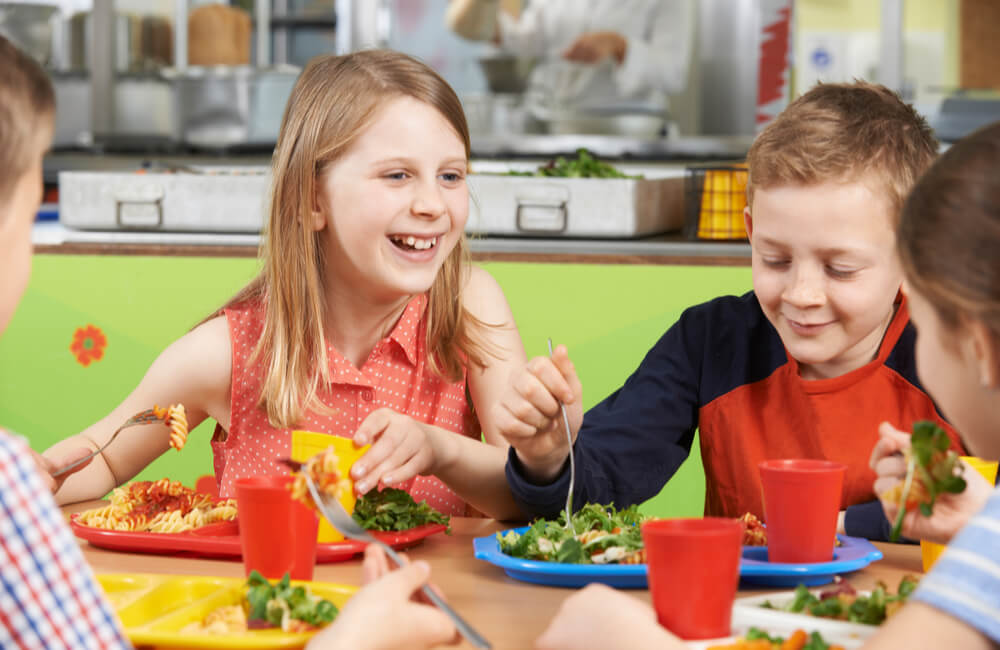 The more science has uncovered the impact of the food we eat on overall health, the more important it’s become to teach young people healthy eating habits at an early age. It’s another aspect of education that today’s teachers must address.
The more science has uncovered the impact of the food we eat on overall health, the more important it’s become to teach young people healthy eating habits at an early age. It’s another aspect of education that today’s teachers must address.
The relationship with food—whether good or bad—is one of the health issues teens confront and often bring to school. And with kids of all ages spending more time sitting in front of screens, lifestyle and food choices become even more important.
Causes of Unhealthy Eating
There isn’t a person living in the United States who hasn’t confronted this issue at some point in their life. If we know it’s bad for us, why do we eat unhealthy food? School children are likely not conscious of what is driving their bad choices. But the earlier they learn how to deal with these issues, the easier job they will have in establishing healthy eating habits.
Every person has a unique experience with food. However, certain common issues can drive people to unhealthy eating. Knowing them can make educators better prepared to teach healthy eating habits.
Emotional Eating
Emotions can lead people of all ages to make questionable eating decisions. It’s especially powerful when anxiety or stress leads someone to seek comfort in food. The world is tough and people may disappoint, but a thick crust pepperoni with extra cheese (or whatever calorie-heavy comfort food people choose) never lets them down. Teaching young people healthier ways to work out emotions can keep them from always reaching for food to make them feel better.
Personal Choice
In some homes, power struggles over food can lead to kids making unhealthy choices. For example, a young child or teen who feels pressured to eat certain types of food may eventually rebel against eating it and make another, less healthy choice. The key is providing kids with a variety of healthy foods, not just one or two. And when taught about nutrition, many students will make better choices.
Lack of Healthy Options
In some homes, the pendulum can swing the other way. Rather than trying to pressure kids into eating broccoli and raw carrots every night, the pantry is full of sugary snacks, chips and sodas. A bowl of apples will sit forgotten on the kitchen counter for many days if it’s the only healthy choice competing against candy bars and cookies.
As an authority figure who sees students five days a week during the school year, teachers can significantly impact the food choices students make.
Tips for Teaching Healthy Eating
Keep in mind that what happens in the classroom is only one part of a student’s life. However, teachers who have training and skills in teaching healthy eating habits can influence children through several strategies.
Talk about eating styles:
Teachers can guide a class discussion on the different ways people eat for better health, including vegetarianism, veganism, the Mediterranean diet and a gluten-free diet.
Present research:
There’s plenty of research available on the impact of different eating plans and types of food on health. Teachers should lead discussions that consider these findings without judgment.
Talk about triggers:
This can be difficult and may lead to some revelations, but talking about the triggers for unhealthy eating can help students understand what triggers them and how to cope with them when they occur.
Set realistic goals and healthy rewards:
Teachers should never use food as a reward or punishment. They also should not focus on weight or dieting when talking about healthy eating. An action plan to reach a realistic goal can help motivate students and keep them on course.
Fresno Pacific University offers the online course Healthy Eating for teachers who want to learn the best practices for teaching children healthy eating habits. Designed for educators, the course focuses on ways to positively impact students’ food choices. Educators can earn professional development credit while expanding their knowledge on what causes unhealthy eating and how to teach students healthy eating habits.